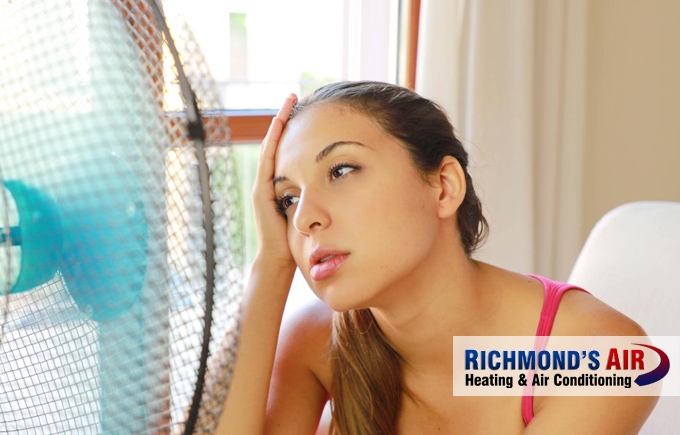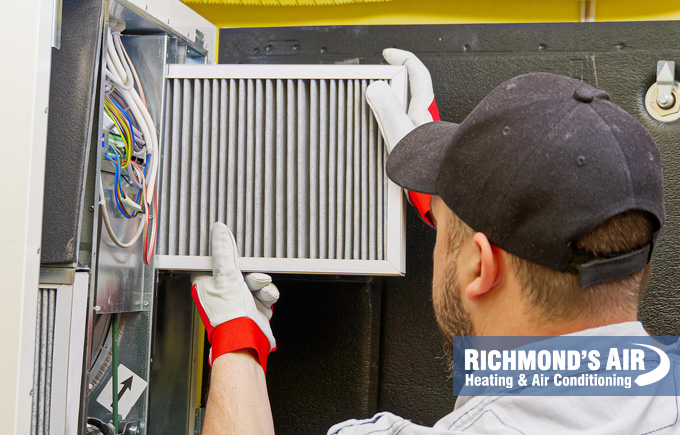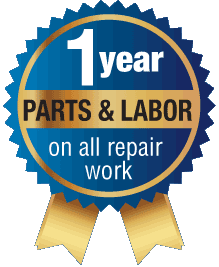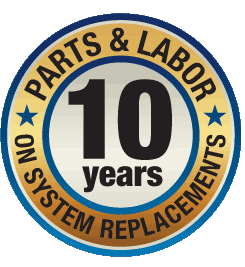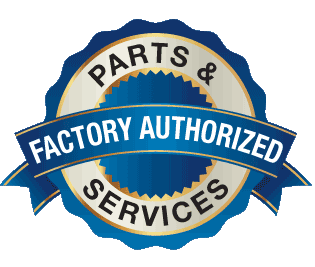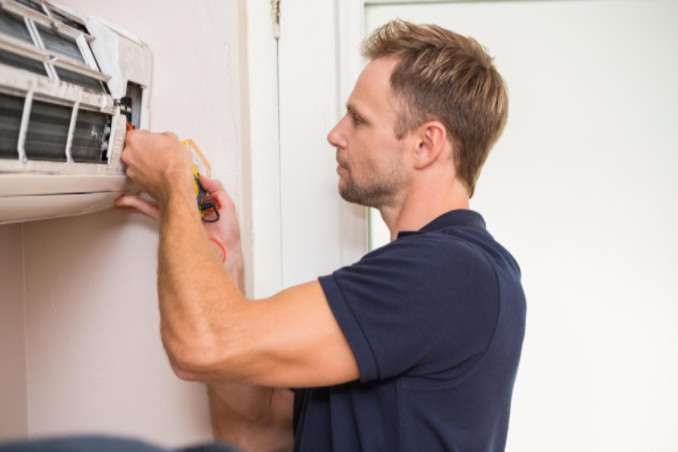
What does an evaporator do?
In most air conditioning units, the evaporator is located inside the top of the system and made of many coils. Refrigerant enters the evaporator from the condenser in its cool, liquid form.
Once the liquid refrigerant enters the evaporator, it’s met with low pressure. Because of this low pressure, the liquid refrigerant turns into a gas. This gas then absorbs heat from the air surrounding it, which cools the inside of your home. From there, the gas refrigerant returns to the condenser to repeat its cycle.
Why is the evaporator important?
Without the evaporator, it would be impossible for your AC system to cool the air in your home. By turning the refrigerant into its gas form, the evaporator allows the refrigerant to absorb the heat within your home.
What issues can result from a dirty evaporator coil?
A dirty evaporator coil can wreak havoc on your AC unit and home environment by doing the following:
- Reducing efficiency. Even a fine layer of dust on the evaporator coil can act as an insulator, preventing the coil from absorbing heat effectively and reducing its efficiency.
- Increasing energy usage. Due to reduced efficiency, the system must run longer to achieve the desired indoor temperature, resulting in higher energy consumption.
- Causing the coil to freeze. Dust and cold refrigerant in dirty coils can cause water vapor to freeze rather than condense, limiting efficiency and potentially leading to the entire evaporator coil frosting over.
- Damaging the compressor. Running the system with a frozen evaporator coil can raise the temperature in the compressor, potentially leading to compressor failure.
How can I prevent dirty evaporator coils?
The best way to prevent dirty evaporator coils is to ensure you change your air filter regularly. Since ACs work through air circulation, they tend to pick up dust and debris in the air. These elements end up in your air filter, where they’re collected. If you don’t change your air filter and it becomes clogged, dust will end up on your evaporator coil instead.
To prevent this, you should have your air filter replaced at least once a month. Also, be sure to have your evaporator coils cleaned and inspected annually to ensure they’re performing optimally.
Top Cooling & Air Conditioning Mistakes Houston Homeowners Make
Learn how to avoid these common mistakes homeowners in Houston make when it comes to cooling their homes in the summer.
How do I clean an evaporator coil?
It’s important to remember that your evaporator works very hard to keep your home cool, and it often requires a bit of maintenance to run smoothly. The first step is keeping the evaporator clean since the coils can trap dirt, which can, in turn, prevent the absorption of heat. This should be done throughout the year, even in winter.
Evaporator coil cleaning requires you to first remove your AC’s inner components to reach them before you can wipe them down and remove the dust. When you’re done, you’ll also need to carefully put back the inner components and secure them in place.
Unfortunately, DIY coil cleaning can be time-consuming and often ineffective without the proper equipment and experience. Hiring a professional HVAC technician is advisable for restoring dirty coils or replacing worn-down ones efficiently and effectively.
As mentioned before, having a clean air filter will reduce the amount of dust and debris that gets to your evaporator coil in the first place, so be sure to replace it regularly.
How often do evaporator coils need to be cleaned?
To keep your evaporator coils working optimally, you need to have them cleaned at least once a year. If you haven’t been regularly replacing your air filter and your AC is showing signs of reduced efficiency, you may need to have them cleaned more frequently.
How do I know if my AC evaporator is bad?
The first thing most homeowners typically notice when their AC evaporator is bad is that their home isn’t being cooled properly. You may start noticing that it produces warm air even after you turn down the temperature. Your AC unit might also start and stop frequently, leak refrigerant, or make unusual noises. In the worst-case scenario, it might not turn on at all.
What Does It Mean if Your AC or Furnace Is Short Cycling?
Learn about short cycling (when an AC turns on and off too frequently) and why it’s important to fix it in your AC or furnace.
How much does it cost to replace an evaporator coil, and what determines the cost?
On average, evaporator coil replacement can cost you between $500 and $2000. The cost of the coil itself can be as little as $175 all the way up to $1600, and labor can cost between $400 and $1000 depending on a number of factors.
Below are a few factors that determine the cost of having an evaporator coil replaced:
- Brand. Different brands offer different pricing for their products, and this will determine the overall cost.
- Coil type. The type of coil and whether or not it’s enclosed will affect the price of replacing it.
- Size of your AC. The larger the AC unit, the larger the coil, which also affects the overall price.
Are evaporator coils covered under warranty for American Standard AC units?
Yes, evaporator coils are covered under American Standard’s basic 5-year warranty and may be covered even longer if the AC is registered.
This said, it’s important to note that the warranty only covers malfunctions that result from a manufacturer’s defect. So, if your evaporator coil gets damaged due to improper use of your AC unit or lack of maintenance, then your claim becomes invalid.
Is it worth replacing the evaporator coil (when not covered under warranty)?
It depends on how old your AC unit is. The average lifespan of an AC unit is 10 to 15 years, so if your unit is 8 years old or older, it might make better financial sense to replace the unit rather than invest in expensive repairs for a unit that isn’t likely to have many more good years left.
Additional reading:
 Read reviews
Read reviews